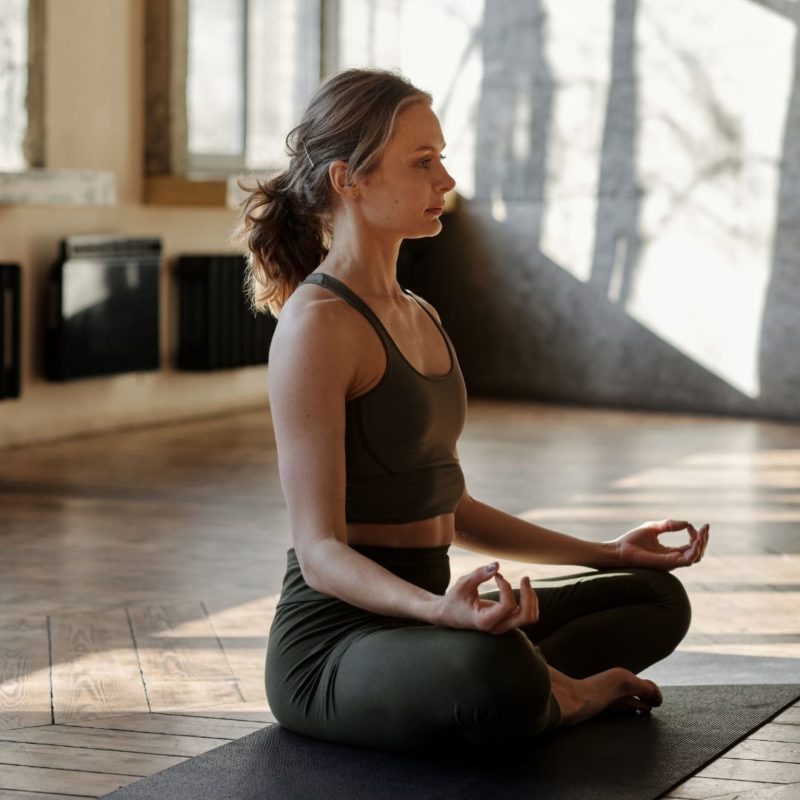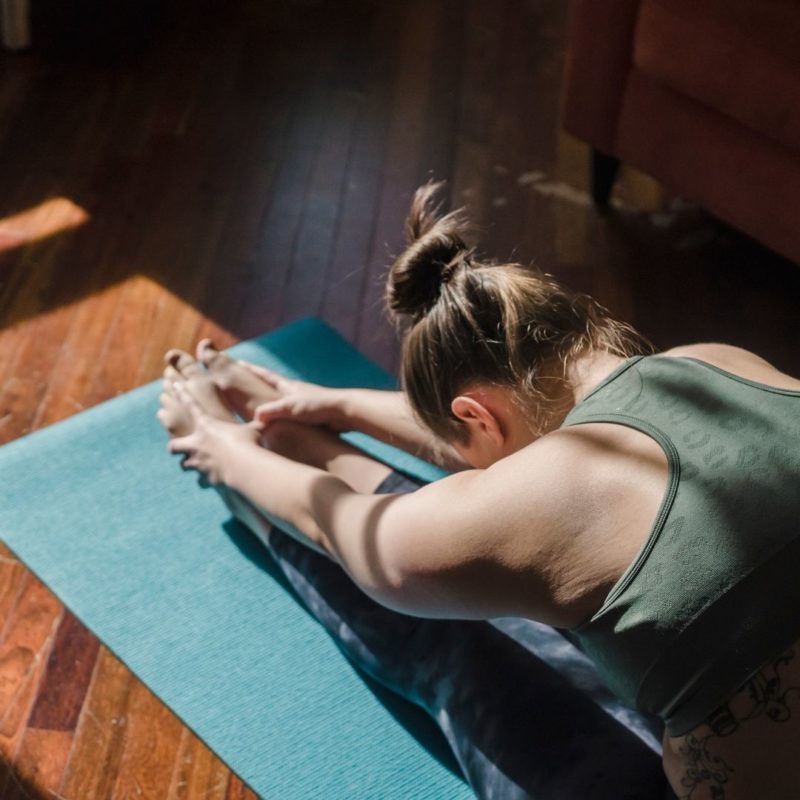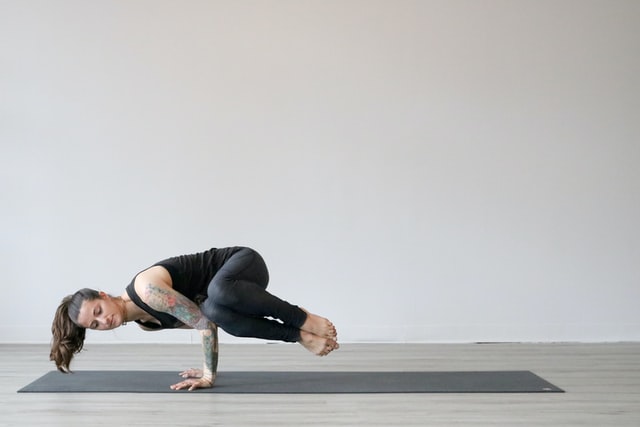Doing yoga is one of the best things you can do for your spiritual and physical health. However, many people overlook the potential disadvantages of yoga.
Yoga is extremely popular, and when you look at all of its good sides, it’s easy to see why. This exercise is an excellent choice for everyone wanting to enhance their flexibility, well-being, and reduce stress. Also, unlike most other exercises, it doesn’t require you to be too energetic and to move poses all the time, which can put strains on your muscles and bones.
However, there are some instances in which doing yoga can do more harm than good. For example, you might do the pose the wrong way, or you might start doing complex poses without warming up. In both of these situations, the negative effects might even harm your health.
So, what are the disadvantages of yoga, and can yoga be harmful? Here are a few situations in which you need to be careful:
Can Yoga Have Disadvantages?

Yoga is one of the most productive forms of exercise out there. For centuries, it has been associated with vitality, long life, and good health. Not just that, but yoga can reduce stress, something we all need in the 21st century! [1]
However, this doesn’t mean that yoga is great for everyone and that it doesn’t have any risks. There are some potential disadvantages of yoga you need to be aware of so you can do this exercise properly.
This isn’t to say that yoga is bad for you. In fact, claiming such things couldn’t be further from the truth! However, doing yoga in certain circumstances can cause more harm than good.
Here are some disadvantages of yoga and meditation:
1. Risks of Injuries
You have to do yoga, as well as practices similar to yoga, the right way. Also, you shouldn’t go overboard. All physical activity should always be done in moderation. Otherwise, you might end up with injuries. [2]
If you’re not used to doing yoga, you’re at risk of hurting yourself. Not just that, but certain poses that extend the neck or the vertebrae might cause brain injuries if you don’t do them the right way!
As such, you need to keep in mind that not all exercises and poses are meant for beginners, and most require warm-ups or proper condition.
2. Hot Yoga Is Not for Everyone
Bikram Yoga, or Hot Yoga, is the practice of doing yoga in very hot and humid environments. Most of the time, it is performed in temperatures of 105 degrees or even higher, with humidity that goes more than 50%.
This type of yoga can help you lose fat and build muscle much faster than regular yoga, as it makes your body sweat and exercise in extreme conditions. This is why it’s becoming more and more popular in the latest years.
However, hot yoga might not be suitable for some people, especially those who already have heart problems. Such an environment can cause fatigue, dehydration, exhaustion, and dizziness. At the same time, it can lead to health issues.
It’s important to know your body well before you decide to participate in such exercises. Consult with a licensed professional or maybe even a healthcare provider before you start going to such pieces of training the first time.
3. Untrained Instructors are Dangerous
Untrained instructors are the main cause of injuries while doing yoga.
In fact, many people don’t believe instructors as they fear they are not good or properly trained. They think it’s better to buy a mat, look at a video online, and start exercising. While this isn’t ideal, it might even be better than listening to an untrained instructor.
Still, the ideal scenario is that you manage to find an instructor who knows what they are doing and who can help you learn how to do poses properly. This can help you use all possible advantages of yoga without risking injuries.
4. You Might Lose Confidence
Yoga isn’t easy, even though it might seem like some of the easiest forms of exercise (trust us – it isn’t!). Many poses take time and constant practice to learn. As such, yoga isn’t the best for impatient people or for people who love to succeed at everything on the first try.
For example, if you enroll in a class that is a much higher level than what you can do, you might feel discouraged and lose your confidence. This can ruin your desire to keep on doing yoga.
Not just that, but this might make you want to compete with other people and train harder, which can make you go overboard and hurt yourself.
5. They Might Worsen Your Mental Health
In general, yoga and meditation are there to help you get rid of stress and various things that you might struggle with. They allow you to be mindful so you can create calmness and be free from distractive thoughts.
However, in some people, yoga in combination with meditation can do more harm than good. If you don’t know how to meditate properly, you might experience depression, panic attacks, anxiety, or even resurfacing of traumatic memories from your childhood. [3]
If you’re experiencing such issues – don’t worry. There’s nothing wrong with you and this can happen to anyone. We’re not mentioning this to scare you. However, it’s important to understand that such issues might occur, so you’re ready to tackle with it once it does happen.
6. Some Poses Are Dangerous for Inexperienced
Despite what you might hear, no, you cannot die from yoga – but certain poses are more dangerous than the others, especially if you’re inexperienced.
In general, poses that might strain or damage a part of your body are considered dangerous for beginners. For example, as beneficial as the frog pose is, it puts your ankles and knees at risk as your tissues and ligaments are strained, and you can easily twist them.
The problem is, when you’re a beginner, you might not realize just how dangerous certain poses are. You don’t truly know what muscles and bones are strained, and this can cause severe problems. This is why you should always talk to a professional before you try new poses.
Still, it’s important to note that any pose can be dangerous if you don’t perform it the right way. It’s important to go slowly and to learn your limits so you don’t go overboard.
7. Dehydration
If you do certain yoga practices, such as hot yoga that requires you to be in a heated room, you’re at an increased risk of dehydration or even heat stroke. This is due to the conditions this yoga is performed in.
In regular temperatures, our body produces sweat to cool our bodies down. However, when the humidity is high and the temperature is approximately 105.8 Fo, the sweat doesn’t evaporate from your body. Instead, it serves as another layer on top of our already heated skin.
As such, the risk of dehydration increases, especially if you didn’t drink enough water during your yoga session.
8. There Is a Risk of Stroke
One of the worst complications that might happen to people who don’t practice yoga the right way is stroke.
Yes, something as healthy as yoga might cause stroke if you don’t do it properly. Certain exercises can strain crucial muscles and nerves in your spine and neck if you do them without warming up or if you move your body the wrong way.
Because of this, if you’re a beginner, you should always consult a certified instructor who can guide you through proper posture. Also, avoid poses that are not made for novice users, as they require more skill to do properly.
If you don’t take yoga seriously, you are risking severe health consequences, including even stroke. Don’t allow this to happen to you.
9. Yoga Might Induce Blood Pressure
Yoga is one of the best things you can do for your health. However, in certain occasions, it might be harmful. For example, it increases blood pressure – something that’s not good for people who are already on high-pressure medication.
10. It Builds Passive Strength Only
Practicing yoga makes you stronger and builds your muscle mass – this is true. Certain postures target specific muscles, so if you do diverse poses you can look strong in no time.
However, yoga mostly builds passive strength, not active. You might struggle to do other forms of workouts, such as fitness. As such, it’s advisable to do other forms of workout next to yoga if you want to be actively strong.
Who Should Not Do Yoga?

Despite the many benefits yoga has, this practice is not for everyone. For certain groups of people, disadvantages are usually much larger than benefits. This might include:
- Pregnant women.
- People with injuries.
- People with osteoporosis.
This doesn’t mean that these groups of people should avoid doing yoga altogether. However, they should stick to some regular poses and avoid doing more complex ones.
For example, yoga is a great exercise for pregnant women and it might even help get some relief during labor. There is even a special prenatal yoga that helps pregnant women strengthen the muscles needed during childbirth. [4]
However, many poses have to be avoided as they require intense backbends, abdomen contractions, rapid movements, deep twists, or similar. In short, pregnant women shouldn’t focus on flexibility, but rather on stability and strength. Also, they should never do hot yoga.
People with injuries are risking to make their injuries worse by doing certain poses in yoga. Over flexing an injured muscle or twisting a recently broken ankle might not be such a good idea, and you should never do this.
Also, if you’ve had back injuries, yoga might not be the best thing you should do. While you might think it’s good to flex your back a bit, this can, in fact, cause severe harm or even leave you paralyzed. Never do any type of exercise, unless your doctor recommended them.
And…
If you’re experiencing pain in your neck, knee, back, or hip, you’re at a high risk of hurting yourself while doing yoga. You need to be very careful.
Similarly, people who lead a sedentary lifestyle shouldn’t suddenly get into yoga and do complicated postures. Instead, they should start by warming up, then slowly start building toward doing other poses.
Finally, yoga can be extremely harmful to people with osteoporosis. It can increase bone and soft tissue injury, and you might even strain a muscle by doing certain exercises.
For example, if you’re doing poses that include a supported headstand, you’re risking spinal injuries. Some poses, such as a downward dog or the bridge pose have even been linked to osteoporosis as they involve flexing or extending the spinal cord. In fact, they have been connected to more than 20 various types of bone injuries! [5]
Once again, this doesn’t mean that people with osteoporosis should never do yoga. However, they should modify certain poses to fit some of the special needs they might have to accommodate their health status. This might help reduce the negative effects of yoga and similar exercises.
Bottom Line
While there are some risks and disadvantages of yoga that shouldn’t be overlooked, yoga can be an amazing exercise for people, both physical and mental. However, all beginners need to understand that it’s important to start slowly and to follow specific guidelines so that everything could be performed as safely as possible.
You should never force your body to do something it cannot handle. Listen to what its telling you and realize you have limits. Breathe slowly, and don’t hesitate to take a break between poses, especially if you feel like you need it.
There is a reason why yoga is one of the most popular practices and forms of training in the modern world, and that is because it is among the most beneficial things you can do for your well-being. Just remember to be careful so you don’t risk injuries.
